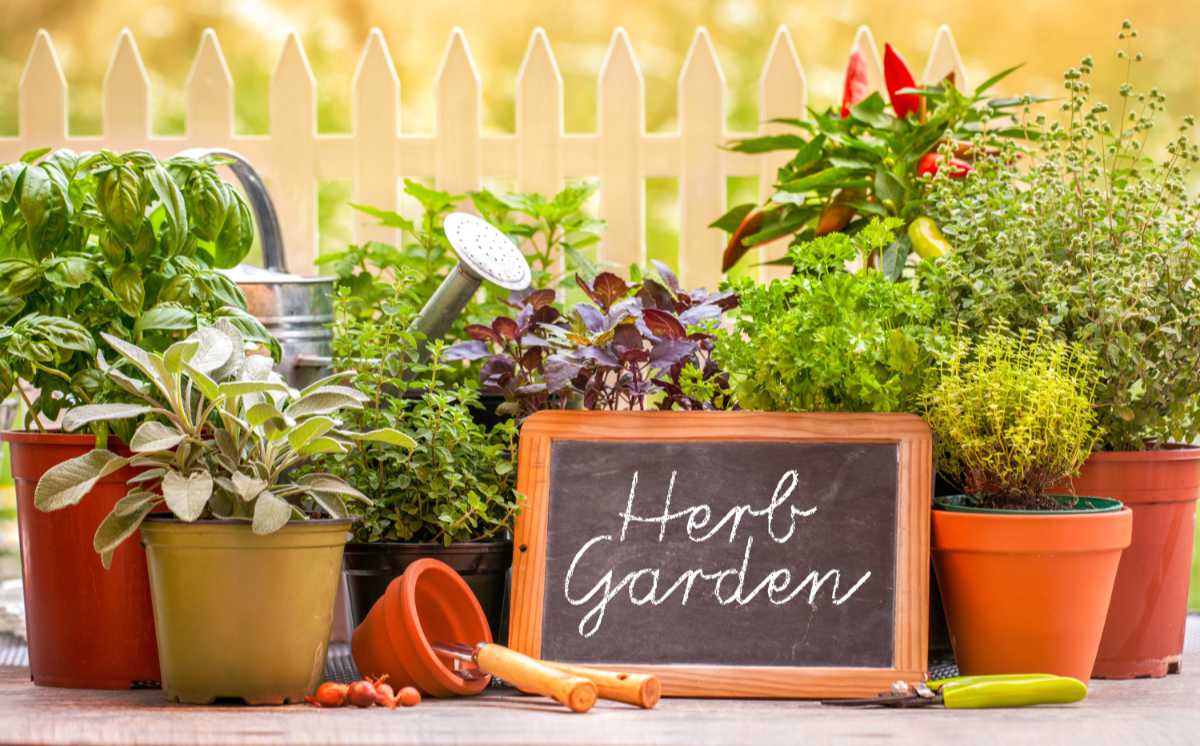Herbs come into their own in summer, added to drinks, salads, dips and sauces. If you love fresh herbs in your cooking, why not create your own herb garden filled with deliciously fragrant, scented and colourful plants, which will add flavour to your menu.
How to create a herb garden
Herbs are easy to grow in the ground or in pots. You can grow them from seeds or plant them as plants.
Best time to plan a herb garden
The dormant period of winter is the perfect time to plan and prepare the ground for a herb garden as well as order seeds and plan which plants are needed. Common herbs such as basil, chives and parsley can be sowed as seeds under glass from January to early April. You can sow seeds direct outside in late spring or create a herb garden with plants – even if it’s just on a balcony in pots.
Small spaces
Tim Evans, horticulture buying manager at Wyevale Garden Centres, whose herbs are all UK-grown, advises that, in small spaces “you won’t want any more than three herbs in the same pot because otherwise they will compete with one another.”
Best herbs to grow
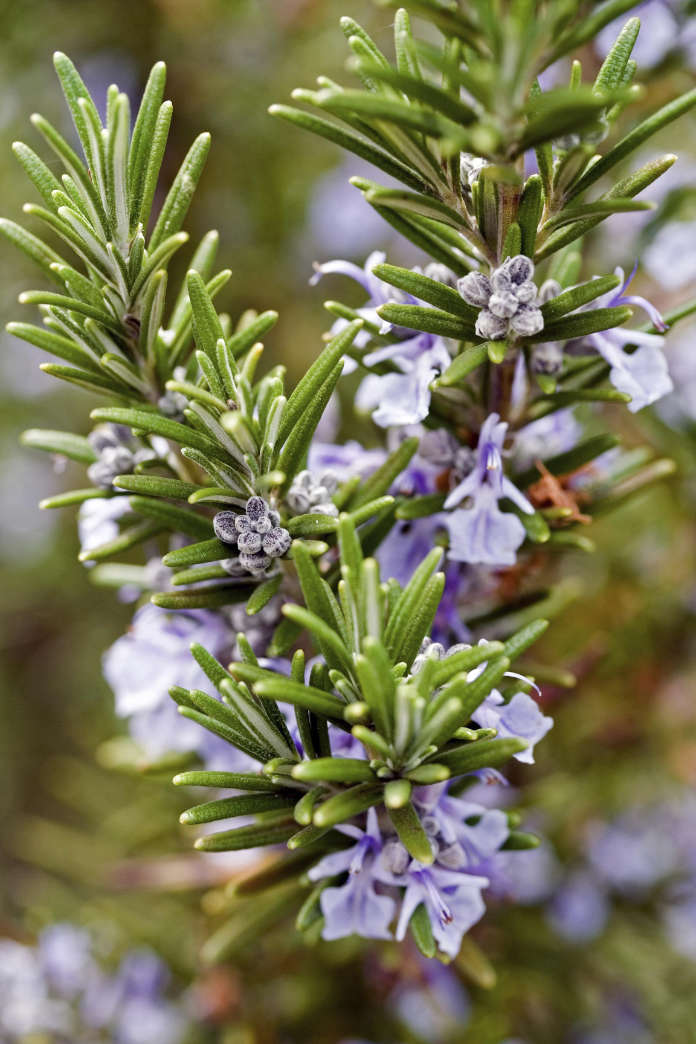
“Try to select a combination of woody herbs with seed-raised ones – have a rosemary, which you’ll use regularly [when] roasting lamb or chicken, curly parsley and chives. They can go into a container together and just replant them once every two years,” Evans suggests.
“The rosemary will keep going, the chives and the parsley will slow during the cooler months, but should come back.”
“Invest in a standard bay tree – there’s all you need for Bolognese and other Italian cooking, and it’s also architectural, as well as a food source.”
Other combinations might include a selection of thymes, which are low-growing, and sages, which are quite high, he suggests. Choose colour contrasts, pairing lemon thymes with common thymes and purple sage.
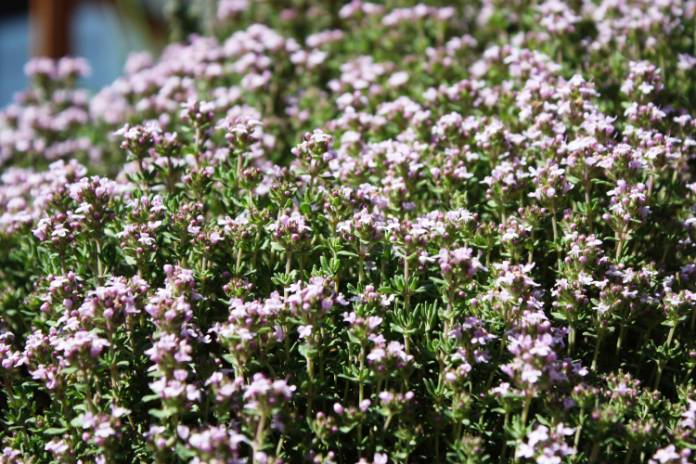
Herbs which can easily be grown from seed include: Sweet basil, salad rocket, dill, coriander, chives, fennel, lovage, chervil and caraway.
There are others which you may have to buy as plants, including: Lemon balm, curry plant, mint, rosemary, sage, bay and French tarragon.
Best compost for growing herbs
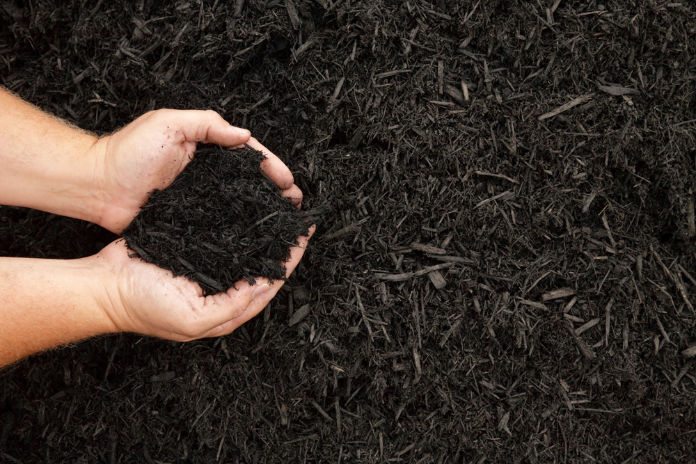
The best compost for growing herbs in containers is John Innes No. 3, says Evans.
“It’s got soil and loam in it, which doesn’t dry out as quickly as peat-based compost,” – particularly in spring and summer he notes.
“Windowsill troughs shouldn’t be much smaller than 30cm and twice the depth of the pot which the herb comes in,” he adds. “Don’t let plants become too congested.”
Choose a sunny spot
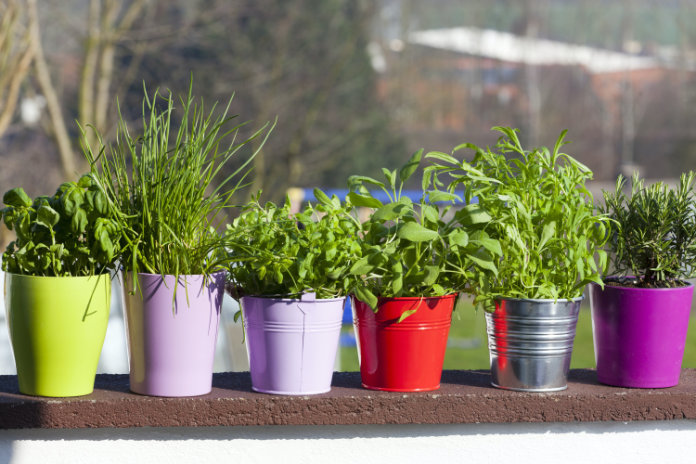
As many herbs enjoy hot, dry conditions and well-drained fertile soil, your herb garden is best off in a sunny south-facing position, with added protection from north and east winds.
If your soil is heavy, dig in some grit to improve drainage and you should achieve better results.
You need to take note of the surroundings as any herb garden should blend in with the rest of your plot, and note changes in levels and where shadows fall at different times of the day.
Grow herbs close to the house
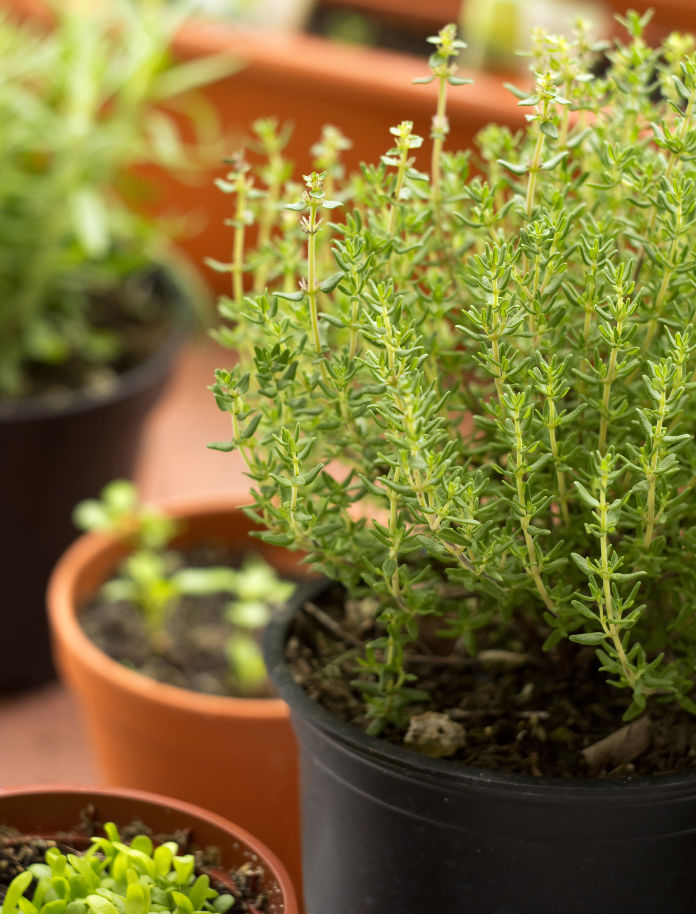
Of course, as you will be using herbs in the kitchen, the garden should be as near to the house as possible. Don’t plant your herbs at the end of the garden because you won’t want to traipse all that way just for a sprig of rosemary for your roast lamb.
If, however, you can’t plant a herb garden too near your kitchen, make sure there is easy access to it by path or stepping stones, so that the soil is not walked on.
For those with limited space, a few herbs in pots on the patio will suffice. But those who have larger gardens might opt for a more elaborate, formal garden in a geometric shape, framed by low hedges or paths.
Such formal gardens look particularly impressive from above, so place it where it may be overlooked from an upstairs window.
Growing herbs in border
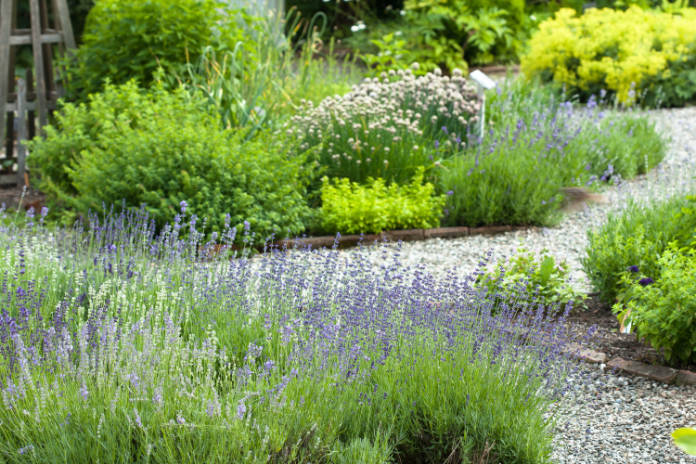
Try creating a cartwheel pattern, with each section planted with a different herb, using bricks to represent the spokes of the wheel.
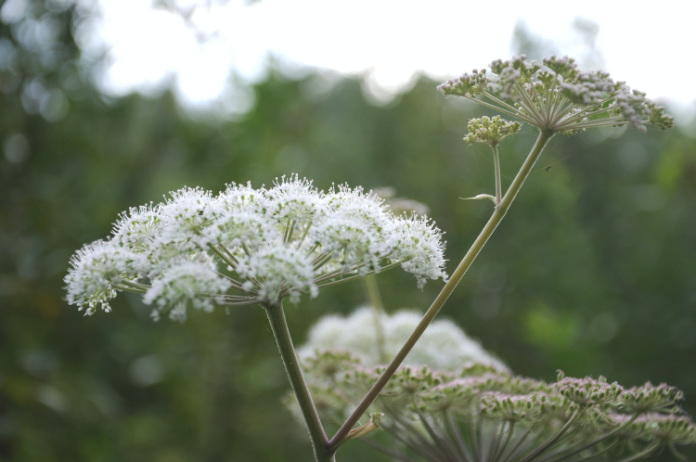
Alternatively, you could just add some herbs to your existing border, but check the height they will reach once fully grown – angelica, for instance, grows up to 2m (6ft), so needs to be placed near the back of the border.
Keep invasive herbs potted
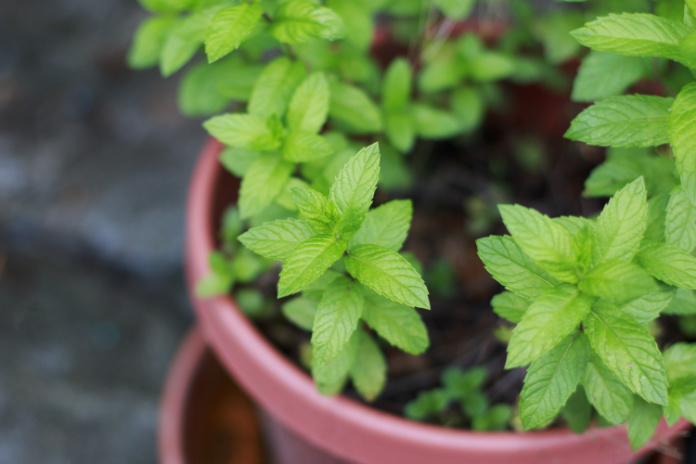
Beware of planting invasive plants such as mint and lemon balm straight into the ground. It’s best to leave them in their pots in the ground if you want to keep them contained.
3 easy herbs to grow n your herb garden
If you fancy having a go at growing some summer herbs at home, here are three of the easiest to grow – which will come back year after year if you look after them.
1. Chives (Allium schoenoprasum)
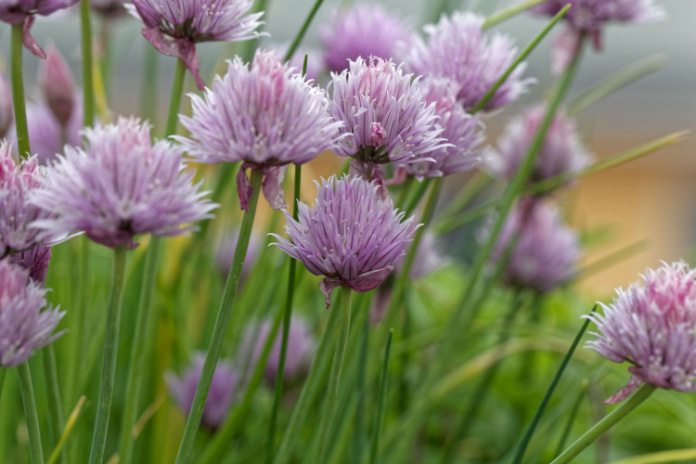
These onion-flavoured perennials are among the prettiest herbs to grow, their pocket-sized purple-pink globes flowering in early summer, so are ideal as ornamentals in the front of a border or as additions to a rockery.
The snips from their slender grass-like stalks have long been added to sour cream as a jacket potato filling, but you can also add them to salad leaves for a peppery taste or sprinkle the cut stalks over creamy soups or sauces for flavour, and use the edible flowers as colourful decoration.
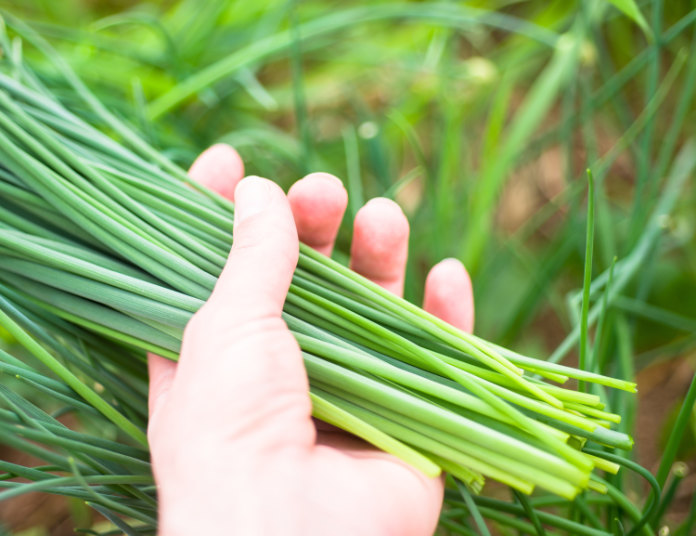
Sow outdoors in spring where you want them to end up, in soil with added organic matter, and rake to a fine tilth before sowing. You can also easily sow them indoors for planting in a sunny spot in late spring or summer, watering them in well. Keep them weeded and watered in dry spells.
Remove faded flower heads and stalks to keep them looking tidy and divide clumps every few years in the autumn, which should keep the plants healthy. You can harvest them when the leaves are at least 15cm (6in) tall, cutting them off at the base with sharp scissors.
2. Thyme
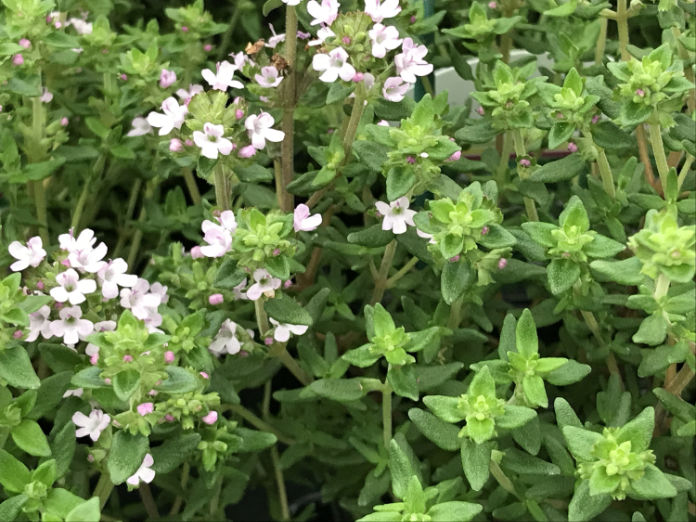
This easy-to-grow perennial herb offers so much more than flavour. You can inhale its delicious scent on warm, sunny days, enjoy its summer flowers and huge variety of leaves, which can cascade over walls or thrive in pots and herb borders.
There are many types and some are not really culinary plants but are grown for their flowers, so make sure you pick up the right type if you want to use it for cooking.
Thyme needs to be planted in a sunny spot in well-drained soil or in a terracotta pot filled with John Innes No 1 potting compost mixed with 50% potting grit to make a well-drained mix.
The best time to plant is early summer, after the last frosts, spacing busy, upright types 23cm (9in) from their neighbours and spreading varieties 30cm (12in) apart.
Water them in and water again in dry spells until the plants become established, after which time you won’t need to water them much at all, and don’t feed them.
Good culinary thymes include T. vulgaris, which has strongly flavoured, short leaves and deep mauve-pink flowers in June and July, and T. x citriodorus, which has lemon-scented leaves and a slightly milder flavour. To harvest, snip young shoots from the tips of the stems.
3. Mint
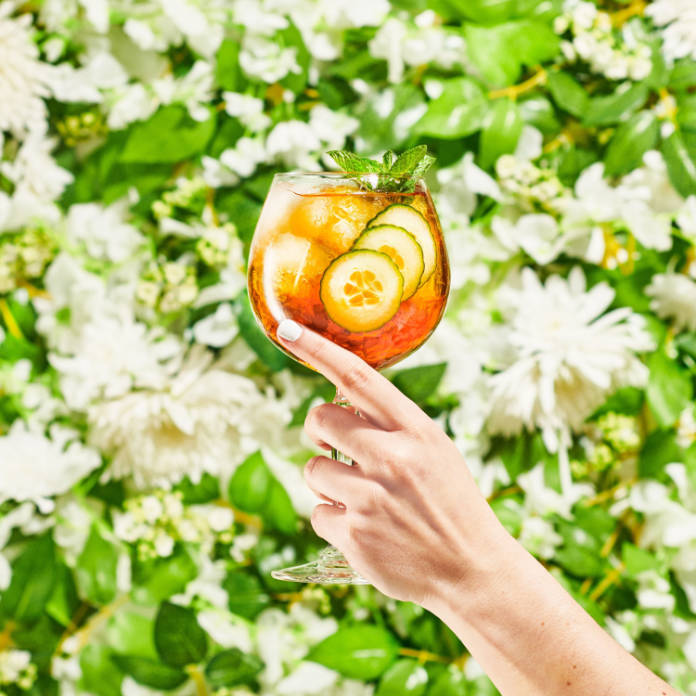
This is the go-to herb of summer, thrown in to pep up delicious salads, or added to Jersey Royals, or livening up a fruity Pimm’s on the patio. There are so many uses for mint and it is among the toughest of herbs.
Plant it in a pot because if you put it in the ground with other herbs or flowers it’s likely to take over. If you want it in a border, contain it in a bucket by digging a hole big enough and then placing the container into the hole, leaving the rim above ground so shoots don’t escape. Again, not all mint is good for cooking, so be careful with your choice.
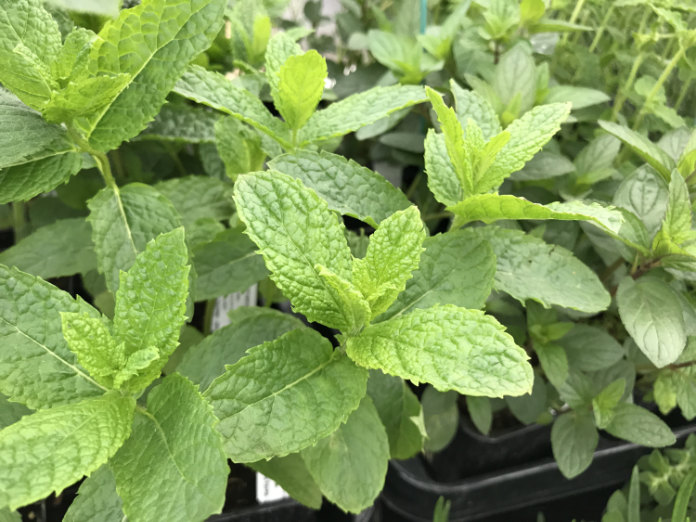
Mint thrives in moist but well-drained soil – multipurpose compost will be fine when growing in pots – and many of them prefer some shade during the day. Give mint plenty of water in hot, dry weather and avoid planting different types close together as they may lose their original scent and flavour.
Pick leaves regularly to stop it getting leggy – the flavour is also more intense if you harvest it before it flowers.
But if you leave it, when it’s finished flowering in summer, cut flowered shoots back to around 5cm (2in) above the base of the plant. If plants become straggly, divide them and replant in new compost.























































